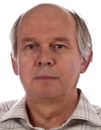Odjel za teoriju i primjenu mikrovalova
Hrvatska sekcija IEEE, Odjel za elektroničke elemente / poluvodičke integrirane sklopove te Odjel za teoriju i primjenu mikrovalova (MTT) pozivaju vas na predavanje u okviru FER-ovog seminara o visokim tehnologijama
Design of microwave heaters for various microfluidcs platforms
koje će održati Tomislav Marković, Mag.Ing., KU Leuven, Belgija.
Predavanje će se održati u ponedjeljak, 19. prosinca 2016. u 12:15 sati u Sivoj vijećnici. Sadržaj predavanja i životopis predavača pročitajte u nastavku obavijesti.
Abstract:
This talk is about development of integrated microwave or millimeter wave based heating systems for total analysis systems (μTAS), which are miniaturised microfluidic lab-on-a-chip devices that perform several laboratory functions on a single device. In total analysis systems (μTAS) accurate and fast temperature cycling is an important issue. Temperature control in μTAS typically employs Peltier elements or resistive heaters, which are limited by the thermal conductivity between the sample and the heating element. Other disadvantages of these heating methods include their limited heating gradient and the required close proximity between heater and fluid. The use of microwaves or millimeter waves circumvents these issues. It has the potential to operate in a non-contacting and spatially selective manner, (dissipation only occurs in the fluid sample). If the material between the fluid and the microwave heating structure has low losses (e.g. glass), very little power will be dissipated there. Using microwaves also has the benefit of being suitable for integration into existing technology platforms, without adding much processing complexity. Although this can be seen as a “closed” research question, the issue of controlling for temperature effects is also important in microwave and millimeter wave sensing devices. In addition, work on the EM-thermal interaction leads to novel ideas for microfluidic actuation.
CV:
Tomislav Markovic received the B.Sc. and M.Sc. degrees in electrical engineering and information technology from the University of Zagreb, Zagreb, Croatia, in 2011 and 2013, respectively. During bachelor and master studies he worked on design of a six-port junction and broadband measurement system for fast waveforms under the supervision of professor Adrijan Baric. He is currently working towards the Ph.D. degree at KU Leuven in the field of microwave and mm-wave life science research under the supervision of professor Bart Nauwelaers and Ilja Ocket.


